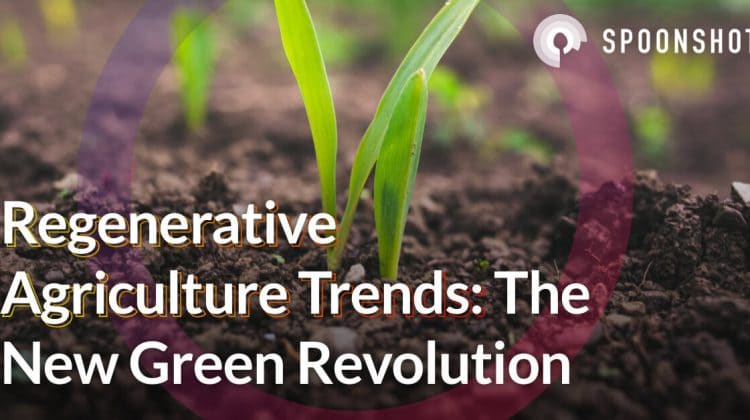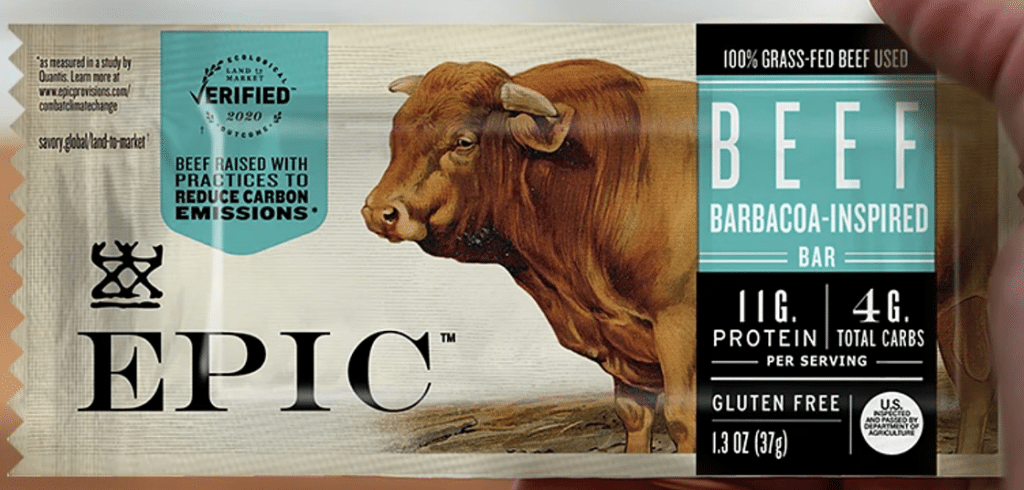
Regenerative agriculture is booming and a lot more sustainable farming practices that are shaping the future of agriculture. In this post we talk extensively about how big companies are using new tech to solve age old problems and why exactly vertical farming is rising.
Old MacDonald had a farm… and it used completely sustainable agricultural practices to minimize its carbon footprint. We’ve started to see a whole new level of transparency emerging in the food and drink industry that is going to make armchair farmers of us all. A number of food majors have not only been investing in sustainable farming but have also started to reap the rewards of this bold new stance.
Table of contents
Beefing up those eco creds
Epic, which makes high-protein bars, just launched a new bar that features beef raised using regenerative farming practices.
According to the General Mills-owned brand, 80% of the greenhouse gas emissions from raising this beef are offset by these practices.
And as proof of this, Epic’s Beef Barbacoa-Inspired Bar is said to be the first bar to carry the Ecological Outcome Verification (EOV) Seal from the Savory Institute. (as seen in the image below).

Vertical integration
Around the same time Epic launched its eco friendly beef bar, McCain Foods announced an investment of over US$65 million in GoodLeaf Farms, one of the largest commercial vertical farming operations in Canada. This investment will enable GoodLeaf to set up vertical farms across the country to offer consumers fresh, nutritious and locally grown produce, while also ensuring that the whole food production process has a much lower carbon footprint compared to current large-scale agricultural practices.
Nestle, Danone, and Land O’Lakes are some of the other food majors putting their money where their mouths are as part of a business coalition to promote regenerative agriculture, rebuild biodiversity, and eliminate deforestation.
Must Read: Dessert Trends for 2022
A sustainable farmer’s market
With all these new words being thrown around, farming is definitely back in vogue. And it ain’t your grandpa’s farm.
Vertical farms, for example, are completely indoor units of plants in stacked rows of trays fed by nutrient-rich solutions and lit by LEDs. These farms are high-tech, rely on data collection, automation, and AI to monitor what’s going on with the crops.
All aspects of the environment, including the temperature, are controlled, which means that the food grown is not subject to the capricious moods of nature. It also means that the crops grown are protected from pests and thus require a lot fewer chemical fertilizers and pesticides.
Since vertical farms can be set up practically anywhere, they have the potential to reduce land and water use, while increasing yield. Some estimates put water use at just 5-10% of that used in fields and is usually recycled condensed water from the cooling system. Given the boom in this space, it’s not at all surprising that business-related interest in vertical farming has gone up by 169% since 2019, despite the pandemic (or perhaps because of it).
Business interest in vertical farming has increased by 169% since 2019

In contrast, regenerative agriculture is done outdoors and is more aligned with letting nature have its way. The premise of this farming technique is restoring the health of soil depleted by industrial farming. The idea is to rebuild soil organic matter – decaying plant or animal tissue that is nutrition for the soil – which improves its water holding and carbon capture capacity. This kind of farming encourages integrating livestock and grazing (natural fertilizer!), cover crops to minimize soil erosion, crop diversity, and no tilling. Numerous studies into this technique have shown that it is a much healthier for the animals, crops, and profits of farms.
The carbon capture aspect of regenerative agriculture is likely what many food companies find appealing. Not to put too fine a point on it, but food companies are pretty big atmospheric polluters, and consumers tend not like that stuff.
Business interest in regenerative farming has gone up by 138% since 2019

Even though regenerative farming seems to operate on a more let-things-be approach, nothing is farther from the truther. Companies investing in this space are collecting tons and tons of data that will help them track emissions, erosion, carbon soil sequestration, and even diversity in birds, insects, and microbes. All of this can then be used by the companies towards informing their sustainability goals.
And by no means are these two the only emerging farming techniques. We’ve been seeing a number of them crop up to deal with different conditions, like arid areas and salty soil. Log into the Spoonshot platform to see more about these techniques as well. But even if you don’t, we’re definitely going to be talking about them in the future.
The road to hyper-transparency
From a company’s perspective, these investments are long-term goals aimed at going carbon neutral or carbon negative in the coming decades. Climate change has emerged as one of the top concerns for consumers globally consistently, based on the World Economic Forum’s Global Risk Report. So it is in companies’ best interest to start addressing the issue and their role in it. On-pack certification from third parties – like Epic’s EOV seal – can go a long way in reassuring consumers that the products are truly sustainable.
We also expect to see an increased demand for transparency from consumers not only in terms of generic callouts, like sustainability, but for more specific information on how exactly a product is sustainable.
Our data shows that interest in conscious purchasing of food has grown by 551% among Gen Z.
These young people, who have proven to be extremely vocal about their views, are the consumers of this hopefully carbon neutral/negative future. They will likely pave the path for hyper-transparency in terms of food processing techniques
Sustainability is making an earnest transition from just another corporate buzzword to real, tangible products. And it is old wine in a new bottle, in the best possible way: traditional practices elevated and made efficient with the help of new technologies, data, and AI.



Leave a Reply